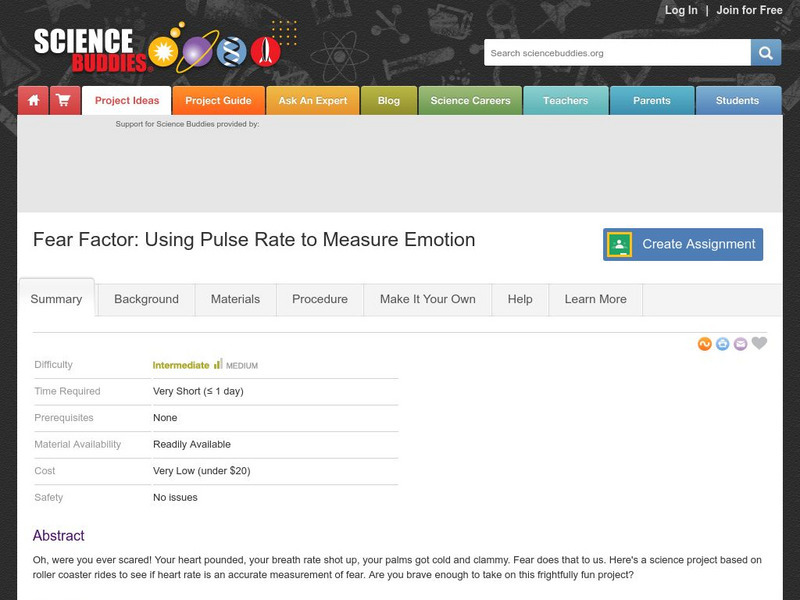Hi, what do you want to do?
Baylor College
Heart Rate and Exercise
What is the relationship among the heart, circulation, and exercise? Your class members will explore first-hand how different physical exercises affect an individual's heart rate. They will begin by learning how to measure their own...
Baylor College
Heart and Lungs
With a partner, youngsters measure their pulse and breathing rates, both at rest and after running in place for a minute. While this activity is not novel, the lesson plan includes a large-scale classroom graphing activity and other...
Curated OER
Cardiac Hill
Students calculate pulse rates to determine level of exertion. In this human body lesson, students hike up a hill or steep slope and take their pulse. Students observe their breathing and energy level then record data.
Curated OER
Why Be Active?
What are some of the benefits of physical activity? Young learners take a look at not just the physical benefits, but also the emotional and social benefits of being physically active. There is a heart rate activity to count their...
Curated OER
Health - Respiration
Here is an interesting and engaging lesson on the lungs and the respiratory system. In it, fourth graders should gain a better understanding of how the lungs work and the role they play in supporting life. Some good, in-class partner...
PBS
Stories of Painkiller Addiction: Learning About Opioids
Feeling high is not the only side effect of abusing prescription opioids. Middle and high schoolers learn more about specific painkillers, including Fentanyl, Oxycodone, and Clonazepam, as well as their common brand names and extensive...
Curated OER
Jumping Scientist
In this exercise worksheet, students take their pulse after jumping rope. Students jump rope several different ways for thirty second and for one minute. They write about their physical reactions.
Curated OER
Marine Mammal Diving Reflex
Tenth graders discuss marine mammal diving reflex, and measure pulse rate while holding their breath under three conditions: control, warm water, and ice water to determine if humans exhibit marine mammal diving reflex.
Curated OER
Why Be Active?
Are there benefits to being physically active? Yes! There are both short-term and long-term benefits! Being physically active doesn't just have strengthen you physically, but also emotionally and socially. Learners find out how to...
Curated OER
Go Cough Up a Lung!
Third graders examine and identify the effects smoking has on the lungs. They view and discuss pictures of a smoker's lung and a healthy lung, and read and discuss an informational handout. Students then participate in an aerobic...
Curated OER
Lightening the Load
Students explore a study of African women who are able to carry heavy loads by altering their gait; they then conduct experiments that study the relationship between exertion, weight and heart rate.
Curated OER
Where Does the Blood Go?
Students investigate where the blood in our hearts travels by observing a diagram in class. In this cardiovascular lesson, students examine their own heart by checking their pulse in class. Students investigate a human body...
Curated OER
Minding Your Body
Learners explore the benefits of yoga and meditation by studying baseball players who incorporate them into their pre-season training. They investigate a variety of mind-body techniques and create a presentation for the class.
Curated OER
Aerobic Activities
Fifth graders discuss what aerobic exercise is, and the origin of its meaning. They view a list of activiities and and discuss why they are considered aerobic while other activities such as baseball is not considered aerobic exercise....
Science Buddies
Science Buddies: Fear Factor: Using Pulse Rate to Measure Emotion
Do you remember a situation when you heart pounded, your breath rate shot up, and your palms got cold and clammy? Fear does that to us. Here's a science project based on roller coaster rides to see if heart rate is an accurate...
Science Museum of Minnesota
Science Museum of Minnesota: Your Heart and Lungs
Learn everything you've ever wanted to know about your heart and lungs as you journey through this human gallery. Animations, videos, lessons and links to new technologies are included.




















